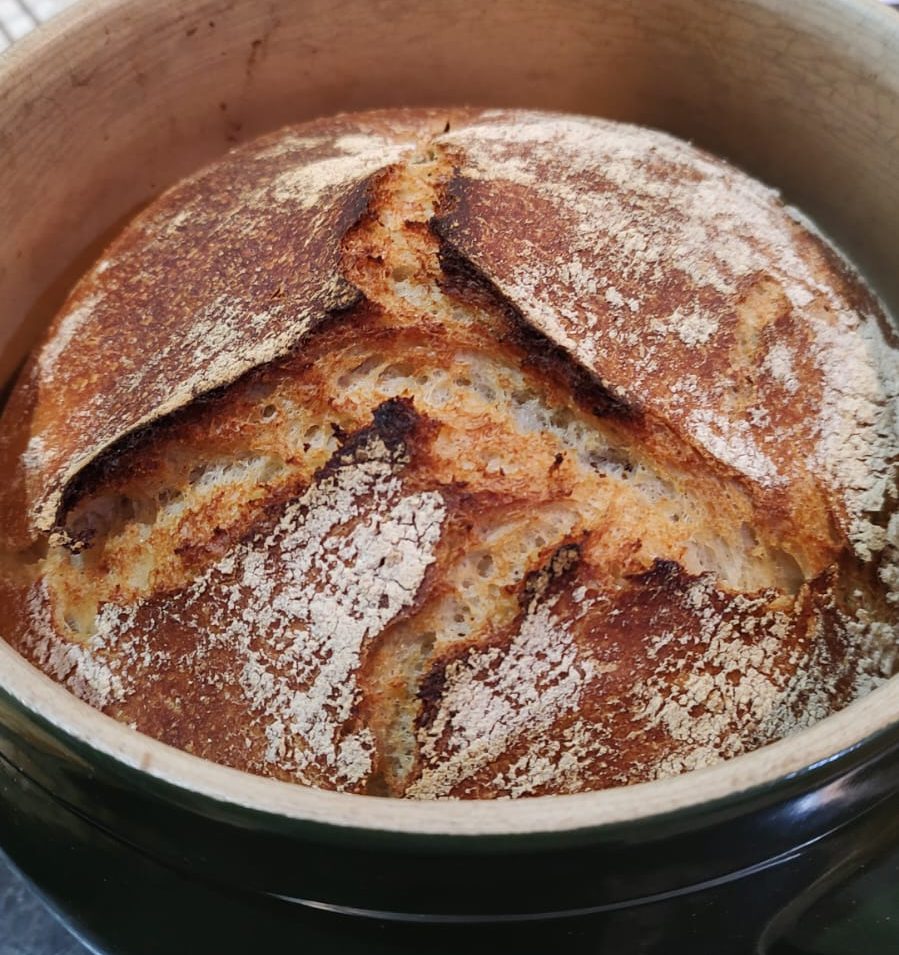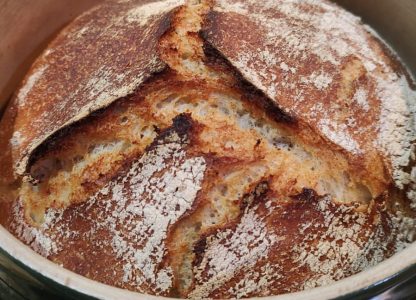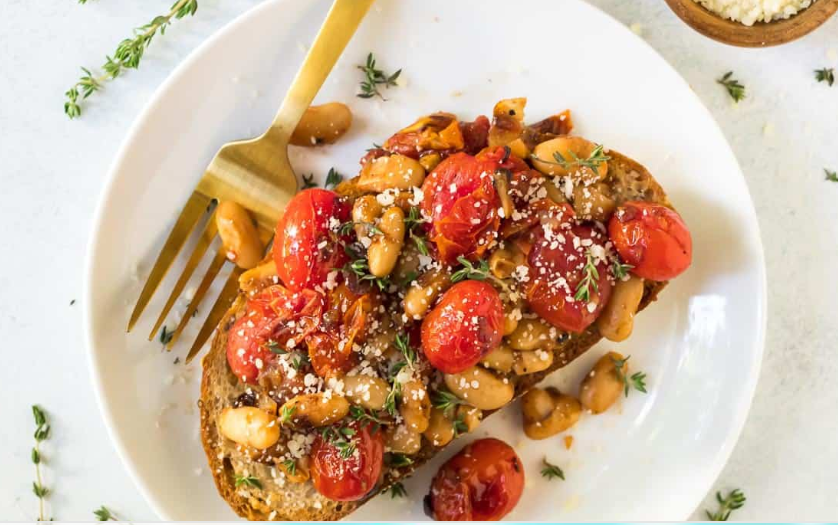If you want to get there. Don’t start from here.
I didn’t know where ‘there’ was when I started this home-baked bread exploration and self-education. I didn’t really know what sourdough was – beyond the fact it was bread and was growing in popularity – it was sort of trendy, if not trending.
I definitely didn’t know where the “start” was. At least not a safe start.
One presumes there has to be the starting point for us all? And potentially a destination point or “get there” marker also. In my case, and possibly in your case too, I was a genuine novice. And like many novices, I began in the wrong place, made plenty of mistakes, before I found myself meandering way towards home-baked sourdoughs most weekends, sometimes during the week, before sharing that exploration, education and experience, with the “home-school sourdough,” and sharing what I had learnt as a workshop.
Reflectively, looking back, writing has provided a wonderful diarised record of the experience. Beginning in the wrong place, before back tracking, and then slowly before moving forward, much more slowly and deliberately. Now I take a lot from encouraging others to bake sourdough and sharing in their successes – which tend to happen a little faster and more reliably than my own did.
Not knowing what you do not know
Of course I loved eating freshly-baked bread however I knew very little about the history, chemistry or nutritional value of fresh and home-baked bread,. I knew even less about the benefits of fermented foods, next to nothing about fermentation for bread, and zip about sourdough. Truth is, I didn’t know there were different “leavening agents,” and therefore categories of breads, with important nutritional differences, methods and schedules. However, at the same time, I was becoming more aware of the dangers of ultra-processed foods (particularly “shop-bought foam-bread,”) and the nutritional benefits of whole foods and whole plant foods, and wanted to improve my nutrition (and my gut health.) Little did I expect that home-baked bread would also have such a positive impact on my wellness and help support the adopt of some improved personal habits.
So, at the outset, I knew little about bread in the broadest sense. I had little notion of where I was to start if I wanted to home-bake bread or where I was heading, which way I was facing even. I had time and I was keen to get home-baking.
A word or warning. When I first started writing about this home-baked bread journey, I was very much a novice. Whilst I have corrected any technical errors, measures and temperatures, I have largely left the posts as they were written. I hope that this will appeal to your sense of learning and adventure. I now bake weekly, often bi-weekly, and I am still honing my home-baked bread making expertise, that is my knowledge and my bread skills.
This is now a series of ten posts, depending on which posts. Most are tagged bread, those related to a specific type of bread are tagged #unleavened, #yeastbread or #sourdough – all share the successes and part successes and missteps.
Why “home-school sourdough”?
At heart I am an educator, however the name “The Sourdough School” was already taken as the title of Vanessa Kimbell’s wonderful book (I have it here by my side and I have now read it a few times over) and this series of (unleavened, yeast and sourdough) bread posts required a unique title. As an educator, I see real value in the tenets of “home-schooling,” and “applied experiential learning” and hence the title “home-school sourdough,” felt fitting – marrying with the 3Es of “explore, experiment, educate,” whilst distinguishing home-baked unleavened breads, yeast breads from sourdough (I do explain how there are different eventually).
Where is “there?” I will circle back around to “here.”
This is my second post on bread. “Treat your bread like wine,” outlines the first steps exploring and self-education, largely the nutritional rationale for getting invested in home-baked breads of all kinds, both unleavened, yeast baked bread and sourdough, in the first place.
As I start this “series,” I still do not know where “there” is, however. I know that I have fallen in love with the deceptive simplicity of home-baked yeast bread (and I would fall harder for complex-simplicity of sourdough bread) and the chemistry of just three simple ingredients (as did Micheal Pollan on “Cooked: Air.”) Which, in truth, is far from simple and as complex as you wish to explore and educate yourself on – it is part of the allure of home-bake sourdough – that and the unpredictability of what you think you know, the bakes you pull from the oven, and the development of expertise.
Second, I love the accessibility and low-entry point of home-baked yeast bread, from baking Brian Lagerstrom boules 2.0 (a cheap but worthwhile gag I know) with my eldest (15), to pan frying Mike Greenfield’s flat bread pittas with my youngest (8), to fast unleavened flat breads, to the challenge of consistent sourdough home-bakes that ultimately lies ahead. Incidentally, I also liked the fact that our Lagerstrom yeast bread boules travelled and reheated really well – we will come back to that in a moment.
I love the socialness that accompanies home-baked bread that has organically happened each occasion I have placed a home-baked loaf on the table, be it fresh or travelled and reheated. In fact, I acknowledge that I have been too impatient and guilty of wanting to showcase our freshly baked loaves too soon. I am learning that time, noticing, patience and scheduling* plays an active role in home-baked bread, more so sourdough. There is something less tangible about having to pay attention, acknowledging you are responding to a “living thing,” first your starter, then your sourdough, (influenced by hydration ratios, ambient and water temperatures, flour types, the type of yeast that has colonised the starter, the type of bacteria present,) the need to listen and feel the dough, to “look with your hands.” More of that in due course, no doubt as I invest of myself in the 3Es.*
In later months and posts, I would come to understand this more clearly, and refer to this as the “complex-simplicity” of home-baked sourdough.
Always knowing, that I came to this point seeking better nutrition and also a better sense of myself and wellness. As a friend shared with me recently,
Yes, baking bread is good for the soul… it teaches us to slow down and wait, then wait some more.
Sarah Z
How to tag this reflection? I am not sure, however it resonates with wellness and is central to both Chad’s and Vanessa’s advocacy for sourdough bread and resonates within a vibrant community of invested home-baked sourdough bakers. As it did with Noa Lachman, sourdough enthusiast and workshop lead and Tamas from BEK’s bakery, a local family-owned artisan vegan sourdough bakery, when we spoke at length about charting our interest in home-baking. The importance of scheduling and record keeping is underlined by the double page “Schedule” Vanessa Kimbell shares on p72-73 of her book, ten steps over two days and Phil over at Culinary Exploration offers a scheduling guide with “How I Bake Sourdough Bread Every Day In LESS Than 30 Minutes.“
These occasions have become “an event,” an almost ceremonious event. The familiar yeasty aromas. The rich caramel crust and singed darkened ears visuals. And I hadn’t known to expect the cooling, crust crackling sounds that announce the loaf’s arrival to the table. There is something in having to wait-your-turn, as the host carves healthy doorstop slices or tears irregular chunks (as opposed to frantic hands snatching for dough balls), exposing the crumb for inspection and evaluation, and releasing a rising trail of trapped moisture and intensified aromas.
More simplicity.
The whole event is elevated with such simple ingredient accompaniment: olive oil (or flavoured oils), vinegar or vinaigrette, butter, meats, cheeses, pate, fruits, roasted vegetables, smashed beans or leftovers… turns this humble centre-piece into a veritable feast and the slow conversation, equally tempered and nourishing.
With each occasion, each season, of course the ingredients may change – and I look forward to that. There is ample inspiration and beauty in the recipes’ section of Chad Robertson’s book. Bruschetta, panzanella, raclette, panade, bagnet vert, escalivada, and of course soups, and anything cooked for longer, in liquid, that the bread can heartily soak up. That said, I encourage you to honour both the simplicity and the socialness. Why…
Because although eating honey was a very good thing to do, there was a moment just before you began to eat it which was better than when you were, but he didn’t know what it was called.
Winnie-the-pooh
I am enjoying the home-school bread-baking experience, the complex-simplicity, accessibility, socialness and wellness. I am now looking to add value to my home-baked bread and also know to scale back my experimentation and expectation. Other than that, I know very little.
I am off in search of there… You will need to start from wherever you are. I am starting here. Feel free to tag along.
Next: How it happened? Thank you Phil!
So the series keeps on growing. It is approaching ten posts now and there could be more.




Pingback: Home-baked bread to home-school sourdough (part viii) – price check – Edventures
Pingback: Home-baked bread to home-school sourdough (part iv) before baking – Edventures
Pingback: Home-baked bread to home-school sourdough (part v) leavening agents and fermentation processes – Edventures
Pingback: Home-baked bread to home-school sourdough (part vii) – impatience and ambition – Edventures
Pingback: Home-baked bread to home-school sourdough (part vi) schedules, shaping, stitching and tension – Edventures
Pingback: Home-baked bread to home-school sourdough (part III) – first yeast bread – Edventures
Pingback: Home-baked bread to home-school sourdough (part x) In search of ‘spring’ – Edventures
Pingback: Home-baked bread to home-school sourdough (part ix) – dutch ovens, shape and size (and weight) – Edventures